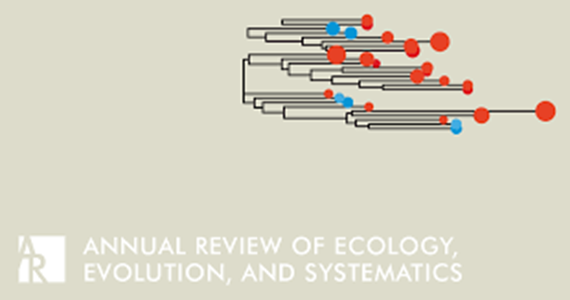社会微生物组的生态与进化
IF 11.2
1区 生物学
Q1 ECOLOGY
Annual Review of Ecology, Evolution, and Systematics
Pub Date : 2024-08-01
DOI:10.1146/annurev-ecolsys-102622-030749
引用次数: 0
摘要
具有密切社会关系的动物通常具有相似的微生物组。这些社会结构微生物组可能通过多种机制产生,而这些机制往往难以区分,包括社会伙伴之间的传播或通过社会结构的共享环境。在这里,我们回顾了社会结构微生物组的证据,并提出了区分微生物组产生机制的方法。我们讨论了这些机制对宿主及其微生物组的进化影响,包括社会传播选择宿主特化微生物组的可能性。最后,我们确定了与社会微生物组有关的未决问题及其对社会进化的影响。我们确定了新的或未充分利用的方法,如纵向研究设计、菌株共享分析和基于培养的特征描述,以解决这些悬而未决的问题。本文章由计算机程序翻译,如有差异,请以英文原文为准。
Ecology and Evolution of the Social Microbiome
Animals with close social relationships often have similar microbiomes. These socially structured microbiomes can arise through multiple mechanisms that are often difficult to disentangle, including transmission between social partners or via socially structured, shared environments. Here, we review evidence for socially structured microbiomes and propose methods to differentiate the mechanisms that give rise to them. We discuss the evolutionary implications of these mechanisms for both hosts and their microbiomes, including the possibility that social transmission selects for host-specialized microbiomes. We conclude by identifying outstanding questions related to social microbiomes and their implications for social evolution. We identify new or underutilized approaches like longitudinal study designs, strain-sharing analysis, and culture-based characterization to address these outstanding questions.
求助全文
通过发布文献求助,成功后即可免费获取论文全文。
去求助
来源期刊
CiteScore
19.90
自引率
1.70%
发文量
21
期刊介绍:
The Annual Review of Ecology, Evolution, and Systematics is a scholarly publication that has been in circulation since 1970. It focuses on important advancements in the areas of ecology, evolutionary biology, and systematics, with relevance to all forms of life on Earth. The journal features essay reviews that encompass various topics such as phylogeny, speciation, molecular evolution, behavior, evolutionary physiology, population dynamics, ecosystem processes, and applications in invasion biology, conservation, and environmental management. Recently, the current volume of the journal transitioned from a subscription-based model to open access through the Annual Reviews' Subscribe to Open program. Consequently, all articles published in the current volume are now available under a CC BY license.

 求助内容:
求助内容: 应助结果提醒方式:
应助结果提醒方式:


